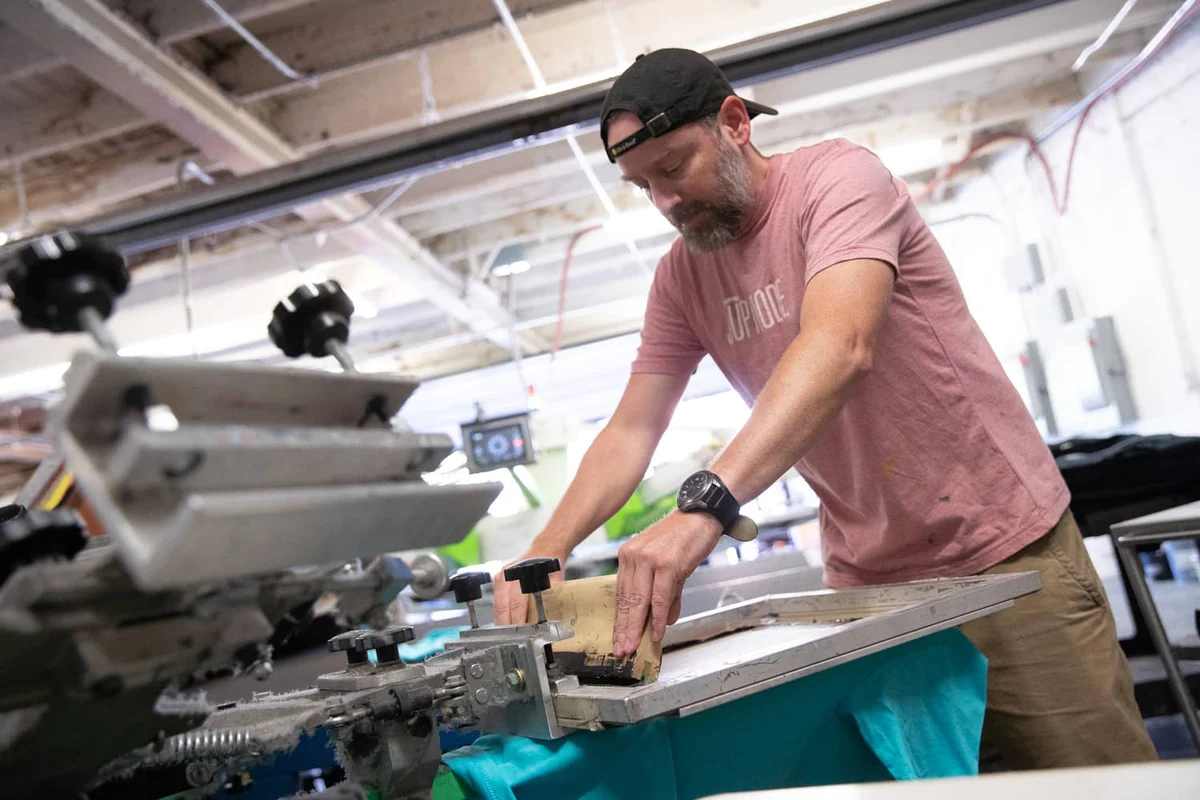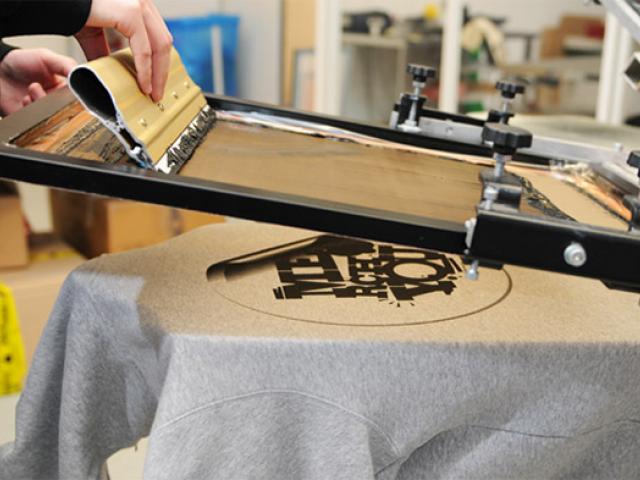What is screen printing?

In screen printing, a stenciled image is transferred onto a flat surface using a mesh screen, ink, and a squeegee. This technique is known as “screen printing.” Screen printing is most frequently done on fabrics and papers; however, with the use of specialized inks, it is also feasible to print onto other materials such as wood, metal, plastic, and even glass. Creating a stencil on a screen with a tiny mesh and then forcing ink (or paint, in the case of artwork and posters) through it to make an imprint of your design on the surface beneath it is the fundamental step in the screen printing process.
The process is sometimes referred to as “silk screening” or “silk screen printing,” and while the actual printing process is always fairly identical, the method of creating the stencil can vary significantly depending on the materials that are utilized. Different stenciling techniques include:
Using either masking tape or vinyl to cover the sections of the screen that you want to hide.
Screen blockers, such as glue or lacquer, are used in the painting process to transfer the stencil onto the mesh.
Creating a stencil by the use of a light-sensitive emulsion, which is subsequently developed in a manner that is analogous to that of a photograph.
Screen printing is a technique that can be used to create designs that employ a single color of ink or multiple colors. When working with products that have many colors, each color needs to be put in its own layer, and separate stencils need to be used for each color of ink.

Why is screen printing used?
Even when used on darker textiles, the screen printing technique can generate colors that are bright and vibrant. This is one of the reasons why it is so extensively utilized. The ink or paint also sits in layers on the surface of the fabric or paper, which contributes to the print’s aesthetically pleasant textural quality. [Case in point:]
The ability of the printer to easily repeat a design in a number of different iterations is another reason why this method is so popular. Because a single stencil can be used again and over again to reproduce a design, it is an extremely valuable tool for producing several identical versions of the same article of clothing or accessory. Because of this, screen printing is a very effective method for producing huge batches of individualized apparel, such as that worn by sports teams or as work uniforms.
It is also possible to make complicated multicolored designs with printing, provided that the process is carried out by an expert printer using professional equipment. Although the complexity of the process does imply that there is a limit to the number of colors that the printer can utilize, it does make it feasible to achieve more intense coloring than would be achievable with digital printing alone.
The history of screen printing
The art of printing with a screen dates back centuries. Around the year 950 AD, China is credited as being the country that initially developed an early form of technology, which was used as a method of printing designs into fabric. Several centuries later, Japanese artisans used the technique to transfer designs onto paper and fabric by using a stiff brush to force ink through a mesh screen made from human hair. The screen was then placed over the surface of the paper or fabric.
The process of printing on cloth using a screen first appeared in Europe in the 18th century, but it took some time for the technique to gain popularity as a result of the expensive cost of silk mesh at the time. Screen printing progressively became a common method of printing fabric as the Silk Road lowered the price of imported silk, making it a profitable way to print on textiles. By the beginning of the 20th century, printers had developed photo-sensitized emulsions, which made it far simpler for craftspeople to create intricate stencil designs.
In the 1930s, artists began experimenting with screen printing as an artistic medium. They named their newly discovered form “serigraphy” to differentiate it from the industrial printing that was prevalent at the time. By the 1960s, screen printing was being used as a medium for the creation of fine art by artists such as Andy Warhol and Eduardo Paolozzi. The artist’s method of producing several copies of a single image through the use of screen-printing was given the name “pop art,” and it called into question the nature of what was considered to be “fine art.” The famous Marilyn Diptych that Andy Warhol created is probably the most well-known illustration of screen printing as an artistic genre.

